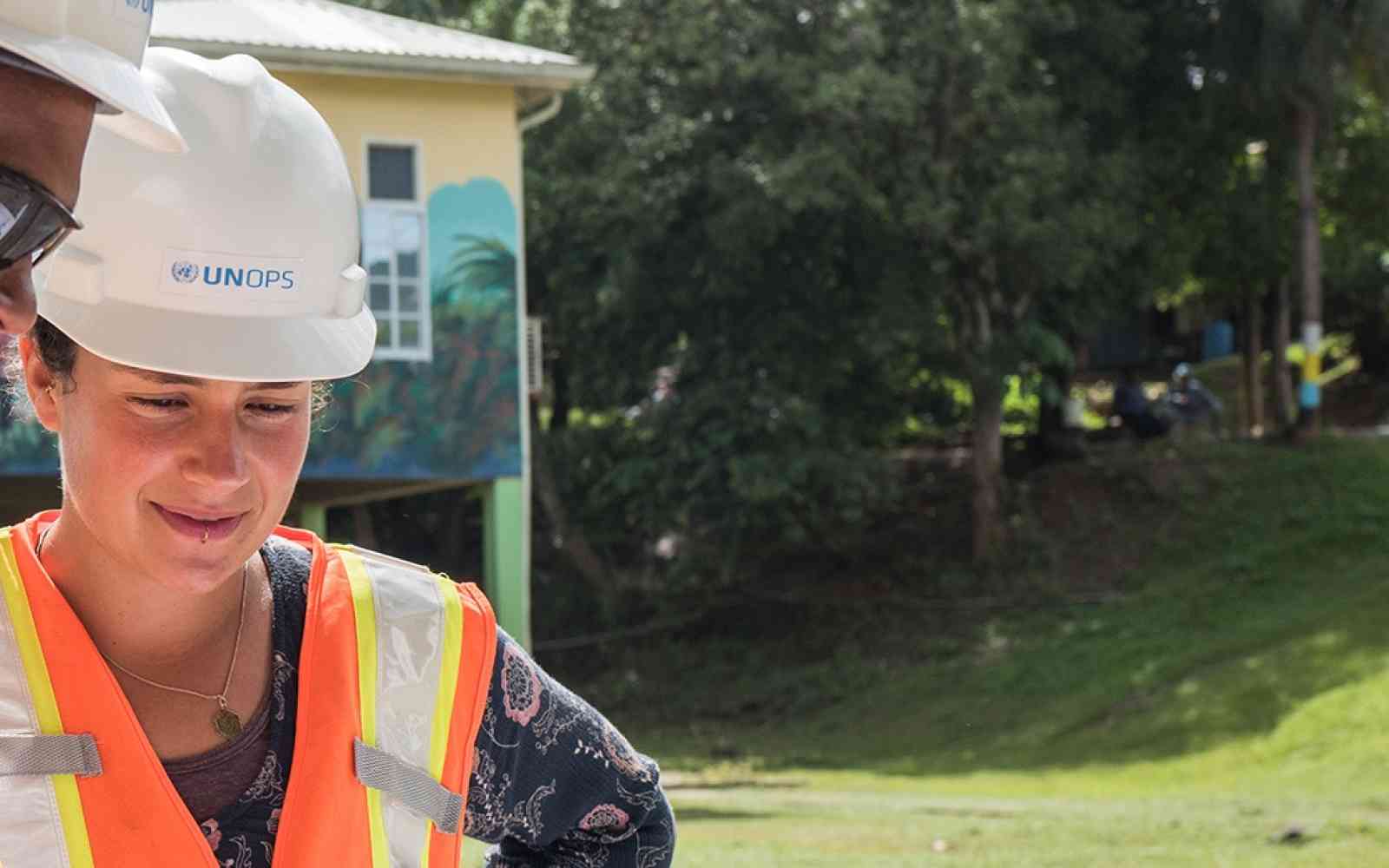The United Nations Office for Project Services (UNOPS)

Building a world that leaves no one behind
Inclusive infrastructure is vital for sustainable development. Here’s why.
Around the world, people depend on infrastructure. Transport infrastructure helps us access food, jobs, healthcare and other services. Water infrastructure helps us access safe drinking water and provides nourishment for crops. Housing infrastructure provides protection, shelter and a stable place to call home.
Infrastructure is the foundation for development – it’s key to providing human dignity and improving well-being.
But what happens when infrastructure doesn’t take the needs of everyone into account? What happens when the infrastructure that is vital for daily life is accessible and affordable for some but not others?
People can be restricted from infrastructure intended to make their lives easier.
About $97 trillion in global infrastructure investment is required by 2040 to support sustainable development. Two-thirds of this will need to be in developing countries. If we’re not careful, not everyone will share equally in this investment – and unequal development trends will be locked in for generations to come.
Infrastructure must be inclusive – when we plan it, when we design it, when we deliver it and when we manage the services that it provides. We must ensure that infrastructure is responsive to users’ needs.
If we fail to do so, the services infrastructure provides become inaccessible to marginalized and vulnerable groups – including women, the elderly, the physically disabled and the economically disadvantaged, to name a few – causing them to miss out on developmental opportunities.
Take transportation infrastructure.
Roads in many urban areas are mainly designed to reduce traffic congestion and geared towards the needs of car users (who often have higher incomes). In many cities, people who can’t afford cars choose to walk or cycle, but often there are non-existent or inadequate sidewalks or cycle lanes. Roads designed with these needs in mind would help them safely access jobs, schools and health services.
Public metro transportation systems are mainly designed to provide a lower cost means of getting around. But access to these services for the elderly or those with physical disabilities may be limited if metro stations have no elevators for people in wheelchairs or people with other mobility issues. Public transportation infrastructure that takes that need into account would enable the elderly to access critical health services more easily and ensure people with physical disabilities are able to access education and economic opportunities.
Gender-blind public transportation can hamper the safety and security of women, exposing them to sexual, verbal or physical harassment. For example, if bus, train and metro stations are not well lit or do not provide adequate safety and security measures, they can leave women vulnerable to attackers while waiting for their ride. Women who try to avoid this harassment may stop using the very infrastructure meant to give them access to education and job opportunities, potentially limiting their economic growth.
The above examples could just as easily apply to other types of infrastructure, including water infrastructure and sanitation facilities, schools and hospitals, just to name a few.
Practical actions must be embedded into the planning, delivery, and operation and maintenance of infrastructure projects so that they are inclusive and address the needs of all users.
Simply engaging with a wide and representative group of stakeholders at each phase of an infrastructure project is one of the most fundamental actions we can take. This engagement provides information to interested actors, helps us understand their expectations from the project, involves them in the decision-making processes, and enables us to receive feedback on the results of a project.
Carrying out a needs assessment at the beginning of a project provides a deeper understanding of the people who will be using the infrastructure, including the specific requirements and needs of identified vulnerable groups. This can help inform the design of infrastructure so that it caters to diverse needs.
Once a needs assessment is completed it should be followed by the creation and implementation of an action plan that tackles the identified constraints and opportunities.
Taking steps such as these helps address the needs of the most vulnerable to unlock opportunities for marginalized and excluded populations. This inclusive infrastructure acts as a catalyst to alleviate poverty, reduce inequality and grow economies – helping everyone benefit equally from investments in infrastructure.
Apoorva Bajpai and Geoffrey Morgan
Apoorva Bajpai is an Infrastructure Sustainability and Resilience Analyst at UNOPS, with a background in urbanization and international development, urban planning and architecture. She has experience working on urban infrastructure development projects in South Asia, with a focus on social and environmental sustainability.
Geoffrey Morgan is the Team Lead for Sustainable, Resilient and Inclusive Infrastructure with UNOPS Strategic Initiatives team. He works to support governments with meeting their climate and development goals by utilizing sustainable, resilient and inclusive infrastructure. He is a chartered civil engineer and has experience working on projects in Africa, Asia, the Middle East and Latin America.















